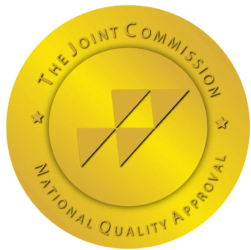Once people realize their drinking has gotten out of hand and recognize that they have a problem, many of them attempt to do a thing that sounds like it should be fairly easy. Stop drinking. Either gradually or all at once, many people attempt to detox themselves without having any idea of the potentially disastrous results that self-detox is capable of producing. The physical symptoms of withdrawal can be both painful and unpleasant. For certain substances, the withdrawal can be just as life-threatening as the addiction itself. Detoxing from alcohol specifically, without trained medical supervision can suffer symptoms that range from mild to lethal. The severity and frequency of these withdrawal symptoms mostly depend on how alcohol dependent the person has become. Do they drink heavily every day? Do they drink heavily but not every day? Or do they drink every day but not heavily?
WHY WITHDRAWAL
Alcohol slows down brain functions and changes the way your nerves send out messages. Over time your central nervous system becomes accustomed to the constant presence of alcohol and has to constantly work harder to keep your brain and your nerves functioning properly. When the alcohol is suddenly and totally removed from this equation, your brain still functions as though it were there. This is primarily what causes withdrawal.
PHYSICAL DISCOMFORT
One of the many reasons that self-detox usually fails is that when someone who is alcohol dependent suddenly stops drinking they can expect a level of physical discomfort. This alone causes many people who are attempting to quit without any kind of support or assistance to fail. It simply does not feel good. It hurts. As an alcoholic, your body is telling you that it needs that drink in order to function properly and in order to even feel normal. As the cravings get worse and the physical symptoms of the withdrawal begin to grow it becomes too painful to NOT drink.
MILD SIDE EFFECTS
People who are on the lower end of the alcohol dependency spectrum should expect to experience tremors and shaking, especially in their extremities. Profuse sweating, nausea, irritability, anxiety, accelerated heartbeat, headaches, anxiety, and elevated blood pressure are some of the other symptoms on the low end of the spectrum. Each person is different and there are factors other than just how alcohol-dependent you are that come into play. Some people might experience all of these symptoms to a very high degree, while yet others may get through it experiencing only half of these symptoms and only to a moderate degree. It is different for everyone.
SEVERE SIDE EFFECTS
Anywhere from 12 to 48 hours after all drinking of alcohol has ceased, the detox symptoms of many people intensify and become worse. Research shows that there is a direct correlation between the level of alcohol dependency an individual has and the severity of the detox symptoms that they will experience. In this stage, the alcoholic will find that he has moved on to experiencing very vivid hallucinations. Also within this window is where convulsions and seizures can occur. This is the part of self-detox that can become deadly. When you suddenly stop giving your body the alcohol that is has become so heavily reliant on it goes into a type of shock.
From this point, it is possible for the person to experience delirium tremens or DT. This is undoubtedly the most severe form of withdrawal from ethanol resulting in drastic mental and nervous system changes. The time frame for delirium tremens is typically within three to five days after all alcohol consumption has stopped. Its symptoms include profound confusion, hyperactivity, hallucinations, and severe cardiovascular disturbances. These and other medical complications involved with DTs can easily turn fatal if not medically monitored. This is another reason why it is so important to participate in a medically assisted detox.
Asana Recovery offers a medically assisted detox program with an in-house facility and around the clock medical supervision. While no detox program is ever going to be 100% pain-free, our staff is prepared to make you as comfortable as possible. If you have already tried detoxing on your own that means you have recognized that you have a drinking problem and that you are ready to handle it. Get in touch with our staff here at Asana Recovery and we can work with you to determine a relevant treatment plan and get you through this in the easiest way possible.





